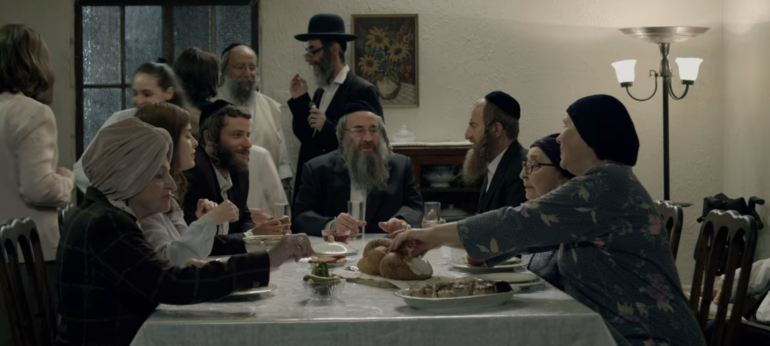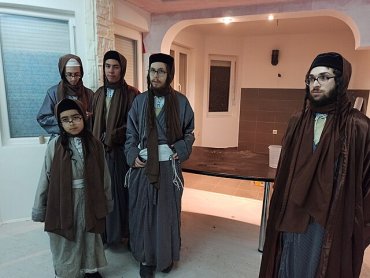
What’s the Difference Between Hasidic vs. Orthodox Jews?
Dear Jew in the City-
What’s the difference between Hasidic vs. Orthodox Jews? What about the Jews on Shtisel vs. Hasidic Jews?
Thanks,
Michael
Dear Michael-
Thanks for your question. As I’ve mentioned in the past, I haven’t seen (and have no plans to see) Shtisel, so I can’t address that. But I can address the difference between Hasidic and Orthodox Jews. It’s the same as the difference between New Yorkers and Americans, or the difference between the French and Europeans, i.e., one is a subset of the other. (To put it differently, all Hasidic Jews are Orthodox but not all Orthodox Jews are Hasidic.)
Hasidism started in the 18th century, in Eastern Europe. Its founder was Rabbi Yisroel ben Eliezer, known as the Baal Shem Tov (“master of the good name,” often known by the acronym “Besht”). While working as a laborer in the Carpathian Mountains, the Baal Shem Tov spent a lot of time in meditation. Around 1736, he became accepted as a spiritual leader and a healer. The Baal Shem Tov died in 1760 but his teachings became the basis of the Hasidic movement.
In the Hasidic movement, greater emphasis is placed on the spiritual, as opposed to traditional Orthodoxy, in which greater emphasis is placed on the intellectual. If there’s a conflict between halacha (Jewish law) and kabbalah (Jewish mystical beliefs), Chasidim are likely to follow kabbalah and non-Chasidim are likely to follow halacha. Chasidus also stresses joy and one’s personal relationship with God. Chasidic prayer services tend to be somewhat more lively than the traditional flavor, incorporating spiritual melodies called niggunim to commune with God. This struck early opponents of the Hasidic movement, known as Misnagdim (literally, opponents), as undignified and perhaps irreverent.
Chasidim adopted certain practices that distanced them from their non-Hasidic neighbors. They imposed additional restrictions on ritual slaughter, with the result that adherents of Chasidus would no longer eat in non-Hasidic homes. They also changed the siddur (prayer book) so that the liturgy represented a synthesis of Ashekenazi and Sefardi texts, called Nusach Sefard. These siddurim reflected the teachings of Rav Yitzchak Luria, also known as the Ari or the Arizal, a great 16th-century kabbalist.
Perhaps one of the most divisive aspects of Chasidus was the way in which the Chasidim elevated their spiritual leaders, known as rebbeim, to an unprecedented degree. A Chasidic rebbe is not just a religious figure, he’s the ultimate authority in his community, whose word is law. If I wanted to sell my house and move to Arizona, I might consult my accountant or my financial advisor but I probably wouldn’t consult my rabbi. A Chasid would likely consult his rebbe (or at least he probably should according to the tenets of Chasidus) before undertaking such a major life change.
The Baal Shem Tov was succeeded by Rav Dov Ber, the Maggid of Mezeritch. It was the Maggid who increased the movement’s emphasis on rebbeim. Clearly the message took as, regarding the Maggid, a follower said, “I didn’t go to him to study Torah, I went to see how he tied his shoes.” Chasidic rebbeim typically spawn dynasties, in which they are succeeded by a worthy son or son-in-law. While non-Chasidim also honor their rabbis and religious leaders, the Misnagdim warily eyed the adoration of Hasidic rebbeim as a kind of “personality cult.”
Eventually, the Chasidim and Misnagdim found common ground as their similarities truly outweighed their differences. This was especially true when both were compared to the 19th-century haskala (the “enlightenment”), which gave birth to the Reform movement. While Chasidim were originally viewed as religious liberals and revolutionaries, they are today seen as among the most conservative of religious traditionalists.
The way Chasidim are traditionalists nowadays is apparent through their communal use of Yiddish as the language of choice and through their mode of dress. These were not noteworthy when the movement was founded as such were the language and dress of all Eastern European Jewry at the time. Nowadays, however, Chasidim are easily identified by their distinctive look.
Hasidic men typically wear dark suits with white shirts and usually no ties. They wear black hats on weekdays and often wear fur hats of varying styles on Shabbos and holidays. In some sects, the men wear knickers (i.e., short pants) with tall socks. I can’t say if this is true of all Chasidic sects but in many at least, men button their garments right side over left rather than left side over right, as is the customary men’s style in the secular world. (I have seen so many “explanations” for this practice that I couldn’t begin to tell you its actual origin.)
Hasidic women dress modestly, with long skirts and sleeves and high necklines. Women also wear stockings to cover their legs. In many sects, these must be opaque; in some communities, they must even have seams up the back. As is the case with other Orthodox communities, married women cover their hair, though different Hasidic sects do so in a variety of styles. Some may wear hats (but never wigs!), others may wear wigs (but never hats!), some may require the double covering of a hat on top of a wig – and then there are tichels (headscarves) and other forms of head covering.
Of course, members of many non-Hasidic Orthodox communities wear dark suits, white shirts, black hats, long skirts and sleeves, and high necklines. Some of the aforementioned sartorial choices are unique to Chasidus while others are shared with other traditional Orthodox Jews.
I often like to point out that differences between Chasidim and non-Chasidim are largely cosmetic. For example, Chasidishe men often have long sidelocks (“payes”) that they may curl in a variety of styles depending on the community to which they belong. Non-Chasidic men also have payes. We may not grow them long but we follow the same Torah obligation not to round the corners of our heads (Leviticus 19:27). Similarly, Chasidim wear a special belt called a gartel for prayer. Non-Hasidic men also separate between their upper and lower halves for prayer, we just don’t require a special garment for this purpose; a regular belt, sash or waistband will suffice.
In short, we may have different focuses, we may emphasize different aspects of Judaism, and we may look a little different but we’re all following the same Torah. We can pray in one another’s synagogues and count in one another’s minyanim (prayer quorums) despite the relatively minor differences in our liturgies. A Chasid can become a non-Chasid without conversion and vice versa. We’re all Jews, we’ve just chosen different paths to get from point A to point B.
I may like to use Control+C to copy text and you might like to select “copy” from the dropdown menu. I may like the bathroom tissue to go over the top of the roll like a normal person and you might run it down the back like a madman. Either way, we’re each getting the job done in a way that works best for us. Similarly, Orthodoxy was never intended to be one-size-fits-all. It’s a bigger tent than most credit and there’s more than one way within Orthodoxy for a person to get closer to God. Historically, different communities have chosen paths that they feel work best for them. And there’s nothing wrong with that.
Sincerely,
Rabbi Jack Abramowitz
Educational Correspondent
Follow Ask Rabbi Jack on YouTube
This article was sponsored by Exhilaread, a thrilling journey to literacy.
If you found this content meaningful and want to help further our mission through our Keter, Makom, and Tikun branches, please consider becoming a Change Maker today.








1 comment
Sort by
Great answer to this question…